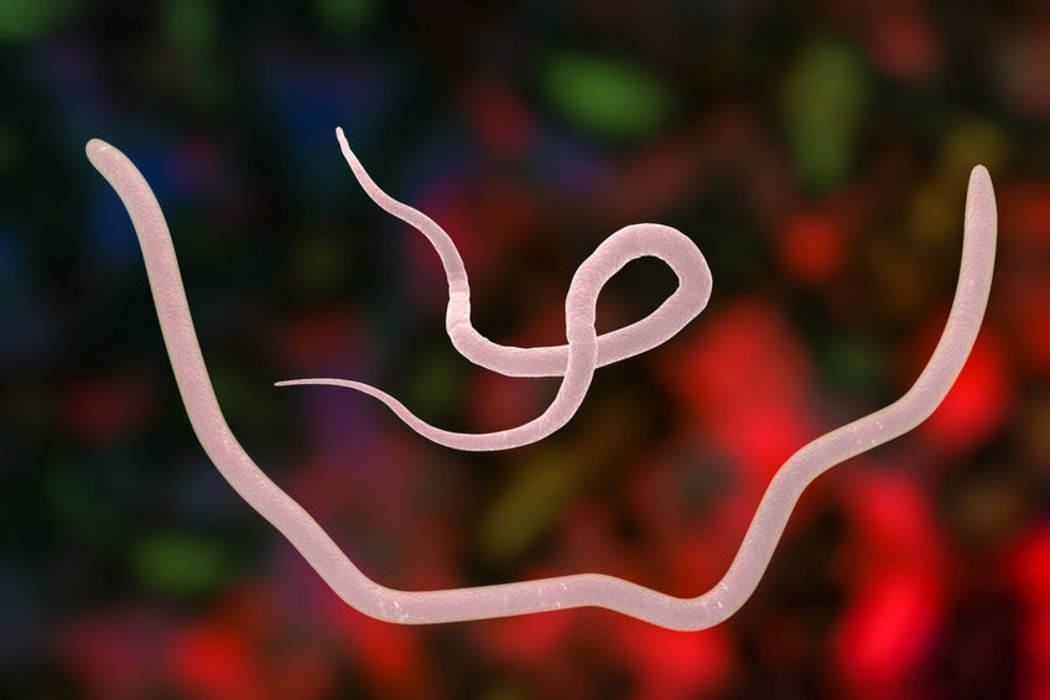A surgeon recently removed a 27-centimetre long worm – along with many of its brothers and sisters – from a North Korean soldier. But that's not as big as worm invaders get, says parasitologist Bruce Russell.

A 3D illustration of the roundworm Ascaris lumbricoides Photo: drmicrobe/123RF
Large roundworms, such as the one found in the soldier, can get over 40 centimetres, Russell says.
These "nasty juicy earthworm-like parasites" (aka Ascaris lumbricoides) are found wherever sanitation is poor and usually in tropical and subtropical regions, says Russell.
In North Korea – a "public health nightmare" – nasty parasites are rife and it's likely people excrete in the fields to fertilise them with "night soil", he says.
Roundworms are ingested into the body as an egg in contaminated food or water.
"They bust through your duodenum, they travel through your blood supply, then bust out of your lungs, you cough them up then swallow them back."
Another worm you don't ever want to meet is the Guinea worm (aka Dracunculiasis) which is found mainly in the Middle East, Russell says.
"They find a blister on the leg and the doctor has to extract [the worm] by one or two turns of a matchstick at a time … These can be up to 30cm long, so it's a long and painful process."
In New Zealand, our biggest parasitic foes aren't worms, but the single-cell parasites giardia and cryptosporidium, although roundworms are a problem for sheep and cattle and young children can be visited by pinworm, Russell says.
He's well aware his parasite passion isn't for everyone.
"I'm not invited to many dinners, I can tell you that."

